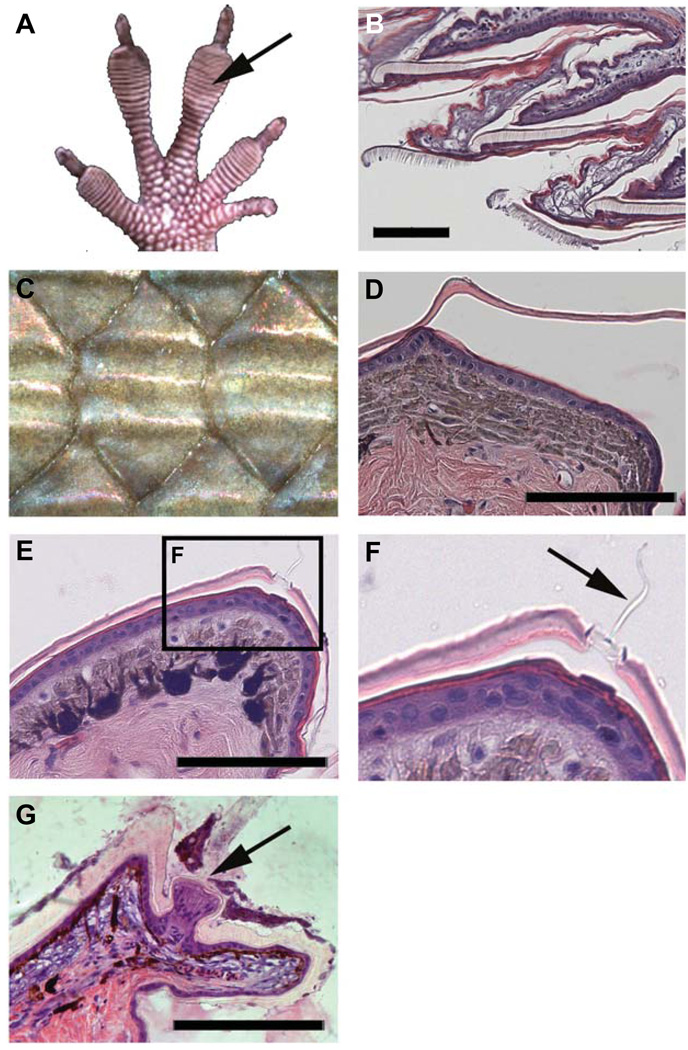Fig. 4. Unusual scale types.
(A,B) Some scales have specialized surfaces to help them climb. (A) Toe pad of anole. (B) Longitudinal sections of digital pads shown in (A). Note the hairy structures on the setae are variations of the Oberhäutchen layer (Fig. 2C). (C,D) Some scales have dorsal ridges (keels) which increase the protective properties of the scales. (C) Dorsal skink scale with three ridges. (D) Cross section of an anole neck scale which exhibits one central ridge (Fig. 2F). (E–G) Some scales form pits, sensory organs with a simple structure at the dermal-epidermal junction (Fig. 2D). (E) Low power view of the distal edge of a scale. (F) Detail of the pit sensory organ in (E) (arrow indicates the sensorial filament derived from Oberhäutchen layer, Fig. 2D). (G) Agama tactile sensory organ. It shows more of a complex epidermal structure with a nerve terminal in its base (arrow). Scale bars, 100 µm.

